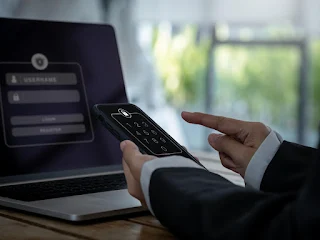Cyberattacks are more sophisticated than ever. And if you’re still relying on just a username and password to protect your business accounts, you’re already behind. This is where MFA, or Multi-Factor Authentication, becomes essential.
MFA is one of the simplest and most effective ways to stop unauthorized access. In this article, we’ll break down what MFA is, why it matters, and how you can implement it effectively across your organization.
What Is MFA?
MFA (Multi-Factor Authentication) is a security method that requires users to provide more than one type of authentication to access a system. Instead of relying solely on a password, MFA adds one or more layers of verification.
These factors usually fall into three categories:
-
Something you know (like a password or PIN)
-
Something you have (like a phone or security token)
-
Something you are (like a fingerprint or face recognition)
To log in, the user must provide two or more of these factors, making it much harder for attackers to gain access.
Why MFA Is Important
Weak or stolen credentials remain one of the top causes of data breaches. Even strong passwords can be cracked, guessed, or phished. MFA reduces the risk of unauthorized access by requiring a second proof of identity that a hacker is less likely to have.
Here’s why MFA is no longer optional:
-
Stops credential stuffing attacks
Even if attackers have your credentials, they can’t get in without the second factor. -
Protects cloud services and remote access
With so many teams working remotely, MFA provides critical protection for email, VPNs, and SaaS platforms. -
Reduces business risk
Adding MFA significantly lowers the chances of a successful cyberattack, data breach, or financial loss. -
Meets compliance standards
Regulations like GDPR, HIPAA, and PCI-DSS often recommend or require MFA as a best practice.
How MFA Works in Practice
Let’s say an employee logs into a cloud app like Microsoft 365. With MFA enabled, after entering the correct username and password, they’re prompted to:
-
Enter a one-time code sent via SMS or email
-
Approve a push notification on an authentication app
-
Use a fingerprint or facial scan if biometric login is available
This second step confirms that the person logging in is who they claim to be. Even if someone else has the credentials, they’ll be blocked without that extra proof.
Types of MFA Methods
MFA can be deployed in various ways depending on the security level required and user convenience.
SMS and Email Codes
A one-time code sent to a registered phone number or email. Easy to implement but not the most secure.
Authentication Apps
Apps like Google Authenticator, Microsoft Authenticator, or Duo generate time-based codes or push notifications.
Hardware Tokens
Physical devices like YubiKeys generate one-time passcodes or plug into systems for direct authentication.
Biometrics
Fingerprint, facial recognition, or retina scan. These are highly secure but require compatible hardware.
Best Practices for Implementing MFA
-
Start with critical systems
Begin by enabling MFA on admin accounts, email, VPN, and finance platforms. -
Use authentication apps over SMS
SMS is better than nothing but can be intercepted. Authenticator apps offer more secure options. -
Educate users
Train employees on how MFA works and why it matters. Avoid friction by helping them set it up correctly. -
Layer with single sign-on (SSO)
Combine MFA with SSO for better security and a smoother login experience. -
Monitor and review
Audit MFA logs and check for failed attempts or unusual activity regularly.
Common Challenges and How to Solve Them
-
User resistance
Some users may see MFA as inconvenient. Clear communication and ease of use help with adoption. -
Lost devices
Have backup methods like recovery codes or alternate factors to ensure account access. -
Cost of rollout
MFA is often included in many business tools and platforms. Start with built-in options to minimize cost.
Final Thoughts
MFA is no longer a nice-to-have security feature. It is a necessary step to protect sensitive data, accounts, and systems from unauthorized access. Whether you’re a startup, a growing business, or a large enterprise, enabling MFA across your key services is a smart and effective move.
The cost of inaction can be severe. A compromised account can lead to data loss, financial damage, and reputational harm. On the other hand, MFA offers a strong layer of protection without major disruption to users.
Want to secure your business with MFA?
Our team at SafeAeon helps organizations set up and manage multi-factor authentication with ease. Contact us to get started with a smarter and stronger security posture.




